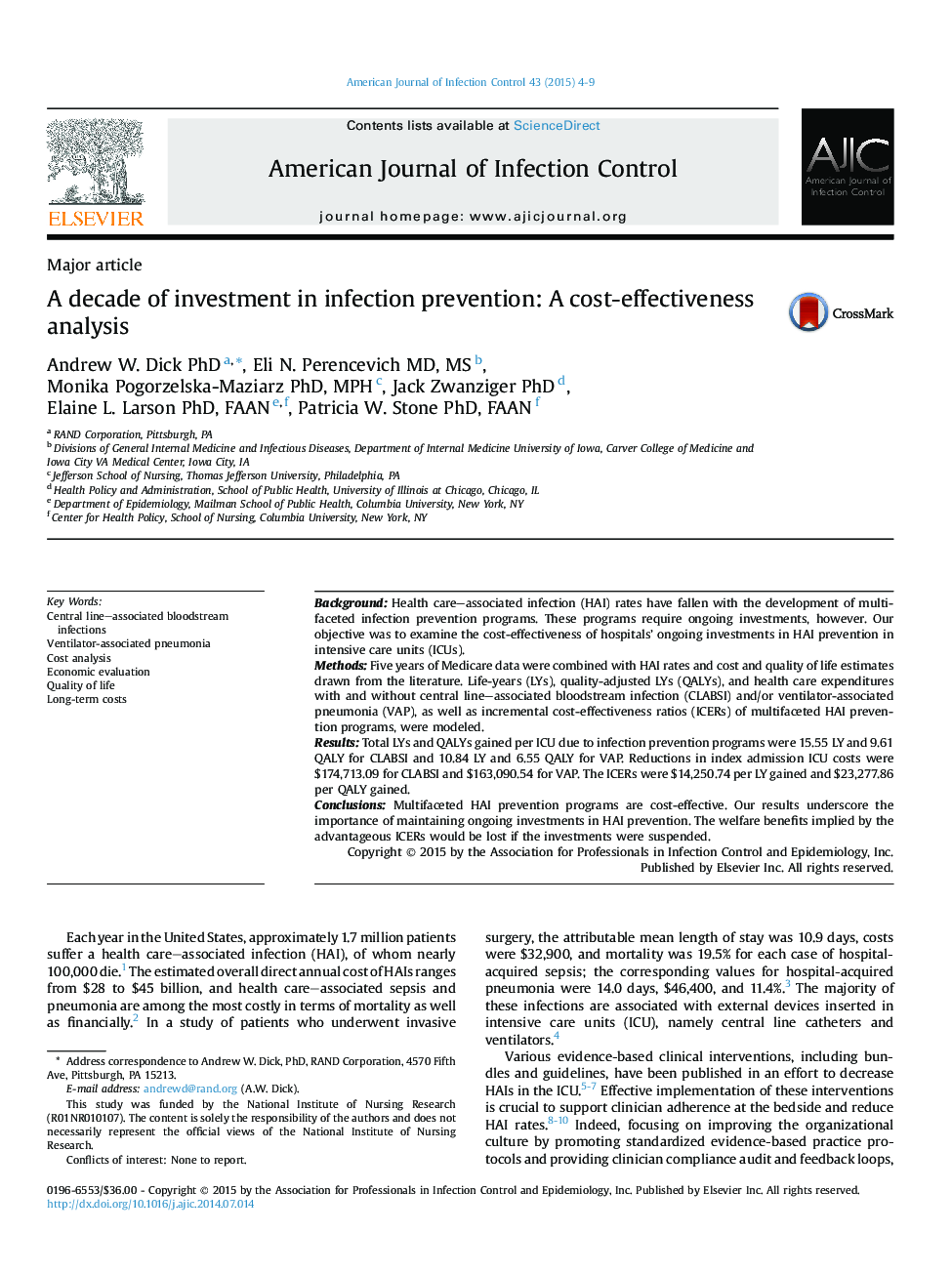| کد مقاله | کد نشریه | سال انتشار | مقاله انگلیسی | نسخه تمام متن |
|---|---|---|---|---|
| 2638060 | 1563477 | 2015 | 6 صفحه PDF | دانلود رایگان |
BackgroundHealth care–associated infection (HAI) rates have fallen with the development of multifaceted infection prevention programs. These programs require ongoing investments, however. Our objective was to examine the cost-effectiveness of hospitals' ongoing investments in HAI prevention in intensive care units (ICUs).MethodsFive years of Medicare data were combined with HAI rates and cost and quality of life estimates drawn from the literature. Life-years (LYs), quality-adjusted LYs (QALYs), and health care expenditures with and without central line–associated bloodstream infection (CLABSI) and/or ventilator-associated pneumonia (VAP), as well as incremental cost-effectiveness ratios (ICERs) of multifaceted HAI prevention programs, were modeled.ResultsTotal LYs and QALYs gained per ICU due to infection prevention programs were 15.55 LY and 9.61 QALY for CLABSI and 10.84 LY and 6.55 QALY for VAP. Reductions in index admission ICU costs were $174,713.09 for CLABSI and $163,090.54 for VAP. The ICERs were $14,250.74 per LY gained and $23,277.86 per QALY gained.ConclusionsMultifaceted HAI prevention programs are cost-effective. Our results underscore the importance of maintaining ongoing investments in HAI prevention. The welfare benefits implied by the advantageous ICERs would be lost if the investments were suspended.
Journal: American Journal of Infection Control - Volume 43, Issue 1, 1 January 2015, Pages 4–9
